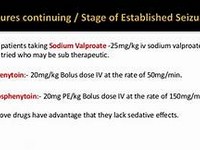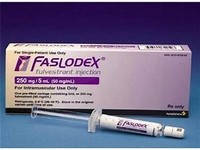doxycycline

doxycycline
CLINICAL USE
Antibacterial agentProphylaxis/treatment of malaria
DOSE IN NORMAL RENAL FUNCTION
200 mg on day 1, then 100 mg daily; severe infections 200 mg dailyLate latent syphilis: 200 mg twice daily Malaria: treatment: 200 mg once daily; prophylaxis: 100 mg daily
PHARMACOKINETICS
Molecular weight :462.4 %Protein binding :>90 %Excreted unchanged in urine : 33–45 Volume of distribution (L/kg) :0.7half-life – normal/ESRD (hrs) :18/Unchanged DOSE IN RENAL IMPAIRMENT
GFR (mL/MIN)
20 to 50 : Dose as in normal renal function 10 to 20 : Dose as in normal renal function <10 : Dose as in normal renal function DOSE IN PATIENTS UNDERGOING RENAL REPLACEMENT THERAPIES
CAPD :Not dialysed. Dose as in normal renal function HD :Not dialysed. Dose as in normal renal function HDF/high flux :Unknown dialysability. Dose as in normal renal functionCAV/VVHD :Not dialysed. Dose as in normal renal function IMPORTANT DRUG INTERACTIONS
Potentially hazardous interactions with other drugsAnticoagulants: possibly enhanced anticoagulant effect of coumarins and phenindioneCiclosporin: possibly increases plasma- ciclosporin concentration Oestrogens: possibly reduced contraceptive effects of oestrogens (risk probably small) Retinoids: possible increased risk of benign intracranial hypertension – avoid concomitant use ADMINISTRATION
Reconstition
– Route
Oral Rate of Administration
–Comments
Do not take iron preparations, indigestion remedies or phosphate binders at the same time of day as doxycycline.
See how to identify renal failure stages according to GFR calculation
See how to diagnose irreversible renal disease
Home









